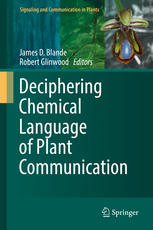

Most ebook files are in PDF format, so you can easily read them using various software such as Foxit Reader or directly on the Google Chrome browser.
Some ebook files are released by publishers in other formats such as .awz, .mobi, .epub, .fb2, etc. You may need to install specific software to read these formats on mobile/PC, such as Calibre.
Please read the tutorial at this link: https://ebookbell.com/faq
We offer FREE conversion to the popular formats you request; however, this may take some time. Therefore, right after payment, please email us, and we will try to provide the service as quickly as possible.
For some exceptional file formats or broken links (if any), please refrain from opening any disputes. Instead, email us first, and we will try to assist within a maximum of 6 hours.
EbookBell Team

4.3
28 reviewsThis book provides an overview of the intricacies of plant communication via volatile chemicals. Plants produce an extraordinarily vast array of chemicals, which provide community members with detailed information about the producer’s identity, physiology and phenology. Volatile organic chemicals, either as individual compounds or complex chemical blends, are a communication medium operating between plants and any organism able to detect the compounds and respond. The ecological and evolutionary origins of particular interactions between plants and the greater community have been, and will continue to be, strenuously debated. However, it is clear that chemicals, and particularly volatile chemicals, constitute a medium akin to a linguistic tool. As well as possessing a rich chemical vocabulary, plants are known to detect and respond to chemical cues. These cues can originate from neighbouring plants, or other associated community members. This book begins with chapters on the complexity of chemical messages, provides a broad perspective on a range of ecological interactions mediated by volatile chemicals, and extends to cutting edge developments on the detection of chemicals by plants.